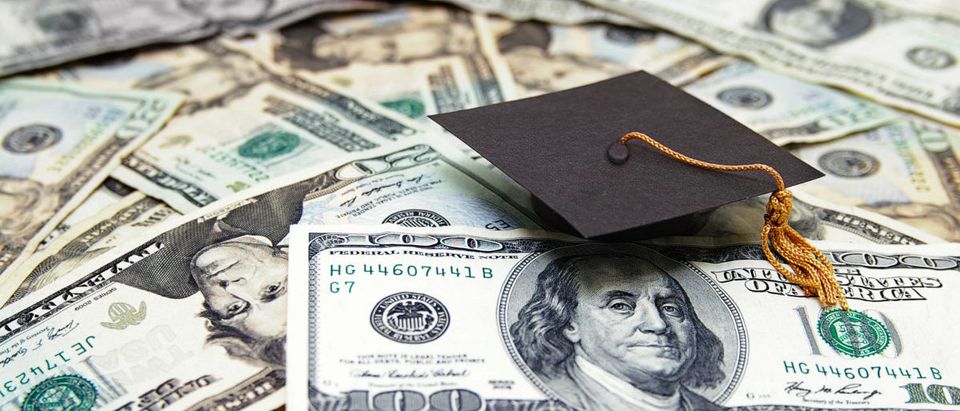Progressives are concerned that Joe Biden might default on one of their key 2020 signature initiatives: canceling $50,000 of student loan debt per person. Sens. Elizabeth Warren and Bernie Sanders bought into this looney idea. Candidate Joe Biden didn’t, although he’s held out the possibility of forgiving up to $10,000 per student.
This proposal is a bad idea at any amount for lots of reasons. First, there’s the “equity” argument (since “equity” concerns seem to be all the rage these days). Several critics have noted already that debt-cancellation favors higher income students and their families who have amassed substantially more indebtedness, especially at pricey graduate and professional schools.
And what about those students and families who saved money the old fashioned way (or paid into state-sponsored college savings accounts) so that these students could graduate college debt-free? Why should they be penalized for good planning, saving, sacrificing and practicing sound money management?
Today’s world is awash in debt, everywhere you look: nations, states, companies, individuals. Annual deficits well above $1 trillion are shrugged off and have become commonplace. When some countries, like Argentina (repeatedly), default on their debt obligations, we see efforts to extend the debt over many more years, lower interest payments, or, in some cases, forgive the debt altogether. Talk about moral hazards!
Why, one might ask, should heavily indebted American students and families be any different?
After a decade of Federal Reserve-sponsored easy money and interest rates effectively at or below zero, it’s a borrower’s and a debtor’s, not a saver’s, world. So bring it on: why not wipe out altogether most of that existing student loan debt?
Estimates put student loan debt at some $1.6 trillion. No other country in the world has a post-secondary education system that creates such debilitating debt for its young citizens.
The “forgiveness” debate thus far, however, has ignored the most important structural consideration: how did so much student debt arise in the first place? Why have our post-secondary education institutions (universities, colleges, community colleges, and trade schools) and our government enabled our young people to run up debt that often affects adversely their future career choices, their spending ability, and their decisions to marry and procreate?
Before accommodating the problem, let’s first analyze how it arose, how to stop the spending increases, and how to ensure that the problem doesn’t repeat itself.
If the Biden administration decided tomorrow to eliminate the entire $1.6 trillion debt load, the problem would remain because our post-secondary education institutions for decades have avoided accountability for their excessive-spending habits. Eliminate the debt today and without major reforms in how our postsecondary institutions are run and financed, the debt dilemma will promptly return.
Here’s what many Americans may not realize: from 1982 to 2012, postsecondary-education spending grew at an unsustainable rate that was four times the growth of the Consumer Price Index and twice the growth of health care spending. We already knew that health care spending was a major problem, but what conclusions can be drawn when postsecondary spending during this same 30-year period rose twice as fast?
We need to ask the people who are running our post-secondary education institutions what role they have played in enabling these unsustainable cost increases and what role they will play in controlling future costs. After all, these postsecondary institutions got the money; what did they deliver?
Perhaps these institutions should be first in line to pay back some of the money they received. Why not tie future federal grant and loan programs to maintaining institutional cost increases at or below inflation? Likewise, schools with high student loan default rates could be barred from receiving federal loan and grant funding. A high default rate, after all, is a proxy for poor quality education.
Administrative bloat and country club-style amenities at some schools have driven up costs. Some critics contend that increased federal funding itself has enabled schools to jack up their pricing.
We also need a national discussion about what our young people should know and be able to do as a consequence of their postsecondary-education experiences. Our graduates should be well-equipped not just for the world of work; they should also be prepared to serve as responsible citizens in our democracy.
Purdue University’s Mitch Daniels and Arizona State University’s Michael Crow have been leading post-secondary education innovators who have focused on providing quality post-secondary education at reasonable costs. Let’s learn from them and other innovators before blindly wiping the slate clean. We need to fix the student-debt structural problems first, not accommodate them.
Charles Kolb served as Deputy Assistant to the President for Domestic Policy from 1990-1992 in the George H.W. Bush White House


